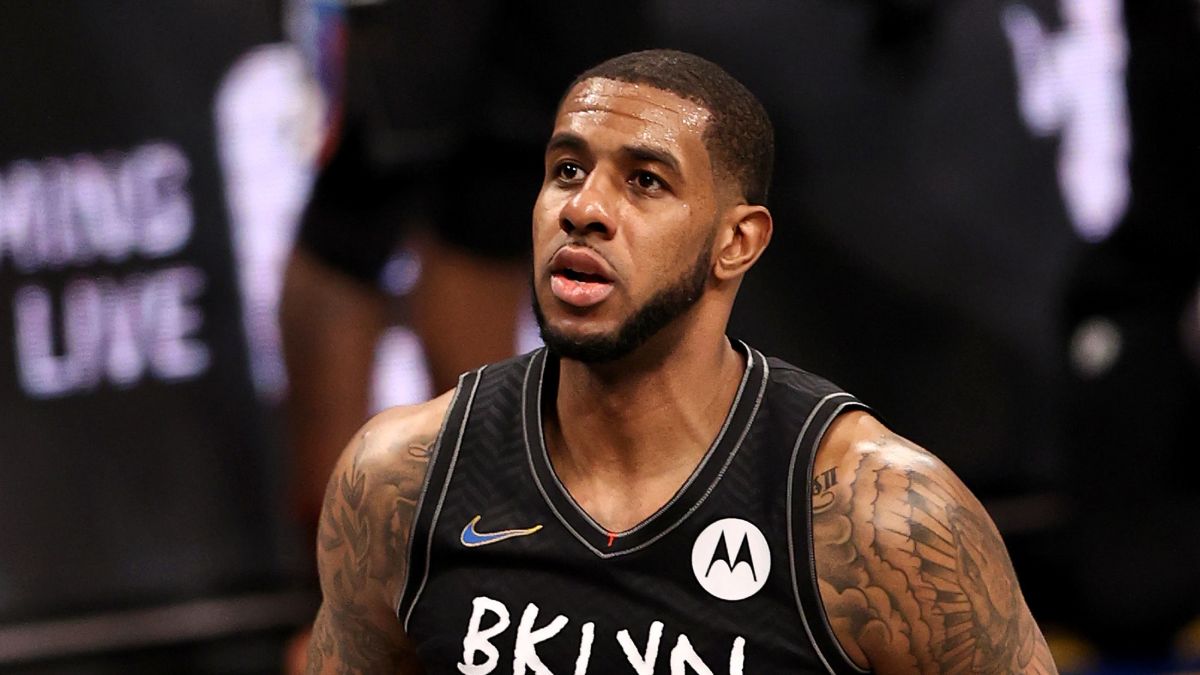In the 48 hours since LaMarcus Aldridge announced his abrupt retirement, the conversation has shifted from his intrinsic value as the anchor in the Brooklyn Nets’ frontcourt amid a studded lineup to his Hall of Fame worthiness. The general consensus is that Aldridge likely won’t be a Hall of Fame inductee. However, his career highlights the precarious line between serendipity and Craigslist’s Missed Connections. He never quite found his hardwood soulmate at the right place and time.
In another timeline, Aldridge would have been Chris Bosh. Both Texas-natives were floor-stretching 7-footers averaging 20 and 10 in their sleep, whose value polarized onlookers until their careers came to abrupt ends due to medical complications. However, Bosh had already won two titles and etched himself into history as an iconic figure during the Heatles era at the beginning of the 2010’ when blood clots ended his career at the age of 32. If the Celtics had not traded two picks to the Warriors for the pick that became Kevin McHale, he’d probably be Aldridge, ring-less and on the fringes o All-Star relevancy.
Undoubtedly, many observers have harkened back to the heights Aldridge and Damian Lillard “could have” reached together, but there is no NBA Hall of Fame, only the Basketball Hall of Fame, which takes collegiate careers into account, but even from that perspective Aldridge was unlucky. Tracing back to his freshman year at Texas, Aldridge’s star-crossed career repeatedly missed its ride to the top.
Aldridge’s freshman year at Texas was a letdown as the 2004 McDonalds All-American averaged approximately 10 points a night, 6 boards, 1.5 blocks in 22.7 minutes even though fellow freshman Daniel Gibson eclipsed him as Big 12 Freshman of the Year. It was his sophomore campaign that set the tone as he averaged 15.2 points on 57 percent shooting from the field, collected 9.2 rebounds, swatted 2 blocks and swiped 1.4 steals en route to the Final Four.
However, Aldridge’s star turn would be relegated to the dusty bin of Longhorn basketball lore because Texas is still a football school and at that time, Mack Brown’s program was in the midst of a magical run to a national title on the back of guy named Vince Young. The second factor in his overlooked career due to him being sandwiched between TJ Ford’s awe-inspiring two years as the Longhorns maestro point god and Kevin Durant’s dazzling freshman campaign. Ford was a more accomplished peer to Chris Paul, leading the nation in assists as a true freshman and carrying Texas to the Final Four, then winning National Player of the Year as a sophomore.
Durant is still considered one of the most dominant one-and-done wings in the annals of college basketball. Had he been paired with any one of these game-changing teammates, a Final Four and national championship contention would have been the expectation and his profile would have risen. Instead, his forgettable freshman campaign, his Big 12 Defensive Player of the Year award and even the Longhorn team he led to the Regional Semifinal were relegated to the dusty also-ran bin of history. It didn’t help that Aldridge’s dull game projected out as a Tim Duncan clone, who was lost 25% of the original’s Hall of Fame DNA during the duplication process.
A draft night trade saved him from the Bulls dysfunctional management and paired him with fellow rook Brandon Roy, who like Gibson at Texas, would blot out his contributions and win Rookie of the Year. Aldridge finished seventh in the vote. However, numerous second fiddles on consequential squads have gotten their just due. Aldridge would be relegated to the Bosh tier as third wheel when the Blazers drafted Greg Oden in 2008. Roy’s knee cartilage deterioration and Oden’s unstable body paved the way for Aldridge’s union with Damian Lillard.
While Lillard unexpectedly transformed into a superstar, Aldridge made the startling decision to bounce from the Pacific Northwest as a free agent in 2015, right when the Blazers were poised to make “the leap.”
If Aldridge had hit free agency a year earlier, he NOT Kevin Love could have been at the top of LeBron’s Cavs wish list in 2014. In fact, two years before Aldridge opted out of Portland, the Cavs viewed him as the centerpiece of their strategy to lure LeBron back to Cleveland. Unfortunately, squashed bis own leverage by pledging loyalty to the Blazers. Aldridge as the third wheel on a Kyrie-LeBron led Cavs team in multiple Finals’ would have thrust his legacy into a different stratosphere—one occupied by someone like Chris Bosh.
In the 10 seasons following their rookie campaigns, Bosh averaged 19.9 points and 8.7 boards. Over an identical period, Aldridge boasted averages of 19.9 points and 8.6 rebounds. Aldridge’s primary domicile has been the anachronistic midrange region in a league which has neglected that space on the floor in favor of 35-foot bombs, corner 3s and wide driving lanes. Last season’s most prolific midrange shooter, Chris Paul attempted a career-high 52.3% from this range. Over the course of Aldridge’s 15-year career, 68 percent of his attempts came from midrange.
After Aldridge’s departure, CJ McCollum developed into a treacherous scoring threat from the wing. Had Aldridge stuck around in Portland’s frontcourt, it’s entirely possible the Blazers may have had a three-headed chimera of its own to push a hobbled Golden State Warriors team in 2016.
Unlike Bosh who bumped off a juvenile Thunder squad in the 2012 Finals, Aldridge had the misfortune of meeting Oklahoma City in the playoffs at their peak. Aldridge led the Spurs in scoring, lighting up the Thunder for 25.5 points on 52 percent shooting, but Hall of Famer Tim Duncan succumbed to age-related Ballzheimers Disease at the worst possible time, delivering 6 points a contest and converting only 36 percent of his attempts just two years after he poured18-10 on Oklahoma City’s head in the Western Conference Finals.
Duncan’s retirement that summer handed Aldridge and Kawhi Leonard the keys to San Antonio’s evergreen dynasty. On paper, Leonard and Aldridge appeared to be a match made in heaven. Leonard was a quiet, unassuming 2-time Defensive Player of the Year, but not yet the transcendent top-5 talent who would also trap Aldridge in his penumbra.
In 2017’s Western Conference Finals, the Spurs held the upper hand on the Warriors as the took a 23-point lead in the second half when Golden State center Zaza Pachulia slid underneath Leonard’s landing zone after the latter attempted a 3-pointer from the left short corner. After Leonard’s injury, the Spurs would get swept and Leonard took his talents to the Great North.
That series would be the closest Aldridge came to a title. Aldridge latching onto the Nets filled a vacancy in their frontcourt was his last chance to serve as a cog on a contending team. At 37, he seemed more comfortable getting in where he fit in and playing flute in Brooklyn’s mellifluous offense behind the rock star trio of Harden, Durant and Kyrie.
Aldridge’s midseason exit is extremely on-brand. It was understated and done succinctly through a Twitter post released Thursday morning.
— LaMarcus Aldridge (@aldridge_12) April 15, 2021
There was no press conference, no chance for a farewell tour, even a send-off in his final outing or a fortuitous end. In retirement, he’s already being overlooked, but in the end the Hall of Fame’s basketball cognoscenti will have an opportunity and a duty to set the record straight.



